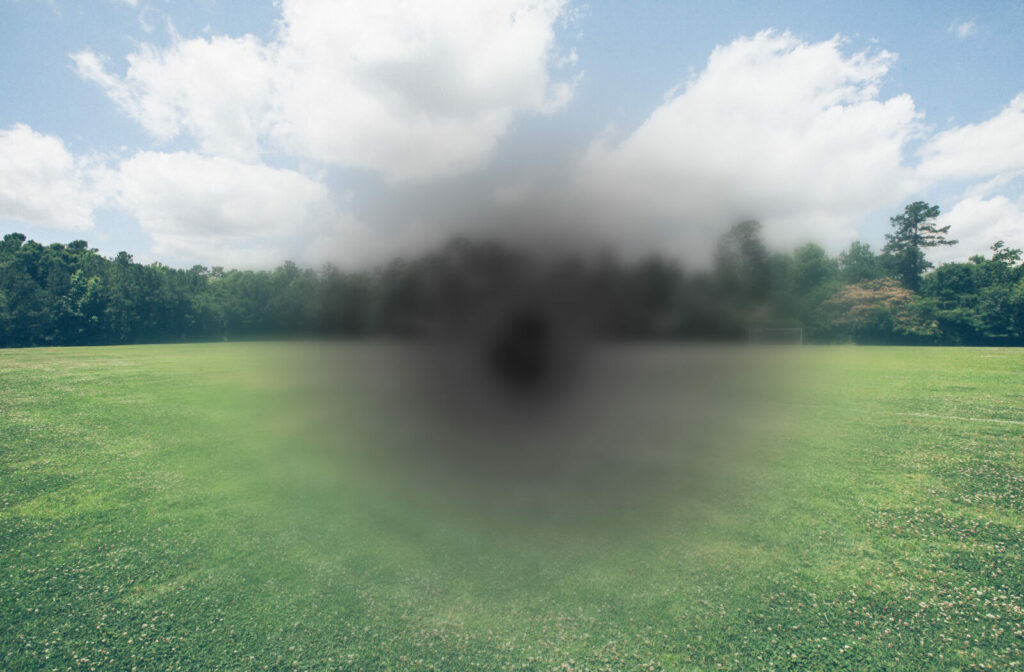Macular degeneration, also known as age-related macular degeneration (AMD), is a serious eye disease that causes your central vision to deteriorate gradually. According to the American Optometric Association, AMD is the leading cause of severe vision loss among adults over the age of 50.
There are two types of AMD: dry macular generation and wet macular degeneration. Dry AMD usually progresses slowly over several years, but wet AMD can cause rapid vision loss in days or weeks. Dry AMD also has three stages: early, intermediate, and late.
With early diagnosis and proper treatment, individuals living with AMD can preserve their vision. In its earliest stage, dry AMD often does not present any obvious symptoms, so it is important to have a yearly comprehensive eye exam to screen for the condition.
What is Macular Degeneration?
AMD is a progressive eye condition that affects central vision. The macula is the part of the retina responsible for sharp, detailed vision and is used for activities such as reading, driving, and recognizing faces. Macular degeneration occurs when the cells of the macula begin to break down, causing vision loss in the center of your visual field.
Risk Factors
AMD is most often associated with aging, as it typically impacts adults over the age of 50. However, there is also research to suggest that genetics play a significant role in developing the condition.
Risk factors for AMD include:
- Age: Adults over the age of 50 have a higher risk of developing AMD.
- Genetics: Having a family member with AMD increases your risk of developing the condition. AMD is also more common among certain ethnicities, especially people of European origin.
- Lifestyle: Smoking, a poor diet, and a lack of exercise can all contribute to your risk of developing AMD.
- Health: High cholesterol and high blood pressure have both been linked to an increased risk of developing AMD.
AMD can develop without any symptoms, so it is especially important for individuals with any of the risk factors mentioned above to attend yearly eye exams.
Dry Macular Degeneration
Dry AMD occurs due to the macula tissue thinning over time. Dry AMD is the more common form of AMD and progresses slowly, usually over several years.
Stage 1: Early Dry AMD
In this stage, vision will appear normal, as early dry AMD does not cause any symptoms. Early dry AMD can only be identified through a comprehensive eye exam. During your routine eye exam, your optometrist will complete a health check of the retina, where the early signs of dry AMD can be identified.
Stage 2: Intermediate Dry AMD
During this stage, your central vision may become blurred. You may have trouble with things like reading or seeing in low-light environments. Some individuals may still have no symptoms at this stage.
Diagnosing dry AMD in the early or intermediate stages is necessary in order to preserve vision. AMD is a progressive condition and can get worse. However, with proper management, you can slow its progress and prevent further vision loss.
Stage 3: Late Dry AMD
Vision problems may become more noticeable. You may start to notice that straight lines look wavy, and the blurry area in your central vision may become more prominent. As it progresses, you may start to experience blank spots in your vision.
Symptoms of Macular Degeneration
Symptoms of dry macular degeneration typically show up gradually and without any noticeable pain. These symptoms can include:
- Visual distortions (straight lines can appear bent)
- Diminished central vision in one or both eyes
- Struggling to adapt to low light
- Blurriness of printed text
- Difficulty recognizing faces
If you’re noticing any of the above symptoms or have concerns about your vision, don’t hesitate to visit your eye doctor.

Wet Macular Degeneration
Wet AMD occurs when abnormal blood vessels begin to grow under the retina and cause damage to the macula. These blood vessels can leak fluid, resulting in rapid vision loss.
Wet AMD usually progresses much faster than dry AMD and can cause serious vision loss. Wet AMD accounts for only 10% of total AMD cases but results in 90% of AMD-related blindness.
Any stage of dry AMD can become wet AMD, so it is important to inform your eye care professional of any changes to your vision.
How Long Does it Take to Lose Vision with Macular Degeneration?
The rate at which vision loss occurs with macular degeneration can vary widely among individuals. In some cases, it may progress slowly over many years, while in others, it can progress more rapidly, leading to significant vision loss in a shorter period.
Factors that can influence the speed of vision loss can include:
- Type of macular degeneration (dry or wet)
- Overall health
- Age
- Lifestyle choices
Dry macular degeneration usually takes its time, progressing over many years. On the other hand, wet macular degeneration is a bit rarer but symptoms can arise in just a matter of days.
Regular monitoring by an eye care professional is crucial for early detection and management to help slow the progression of the disease and preserve vision for as long as possible.
Treatment & Prevention
Unfortunately, vision loss caused by AMD is irreversible. However, with early diagnosis and proper monitoring, both dry AMD and wet AMD can be treated to prevent further vision loss.
Treating Dry AMD
Research has shown a substantial link between nutrition and the progression of dry AMD. Nutrients linked with slowing the progression of dry AMD include:
- Lutein & zeaxanthin
- Omega-3 fatty acids
- Vitamin C
- Zinc
In addition to adding more eye-healthy foods to their diets, individuals with AMD may also benefit from taking AMD-specific vitamins. Some studies have shown that certain vitamins can slow the progression of dry AMD at its intermediate and advanced stages.
Treating Wet AMD
While wet AMD does progress much faster than dry AMD, it is still possible to treat the condition to prevent permanent vision loss. Wet AMD can be treated with injections of anti-VEGF (anti-vascular endothelial growth factor) medication.
Preventing AMD
If you are at risk of developing AMD, here are some steps that you can take to keep your vision healthy for a lifetime:
- Quit smoking
- Eat a balanced diet full of eye-friendly foods
- Stay active
- Monitor your blood pressure and cholesterol
Maintaining Healthy Vision
Your eye doctor is a great resource for discussing all of your vision care concerns, including AMD. Individuals who are already living with AMD will require more frequent eye exams to monitor the progression of the condition and make any necessary changes to their treatment.
If you would like to book an appointment with the knowledgeable team of eye care providers here at Griffin Optometric Group, click here.



